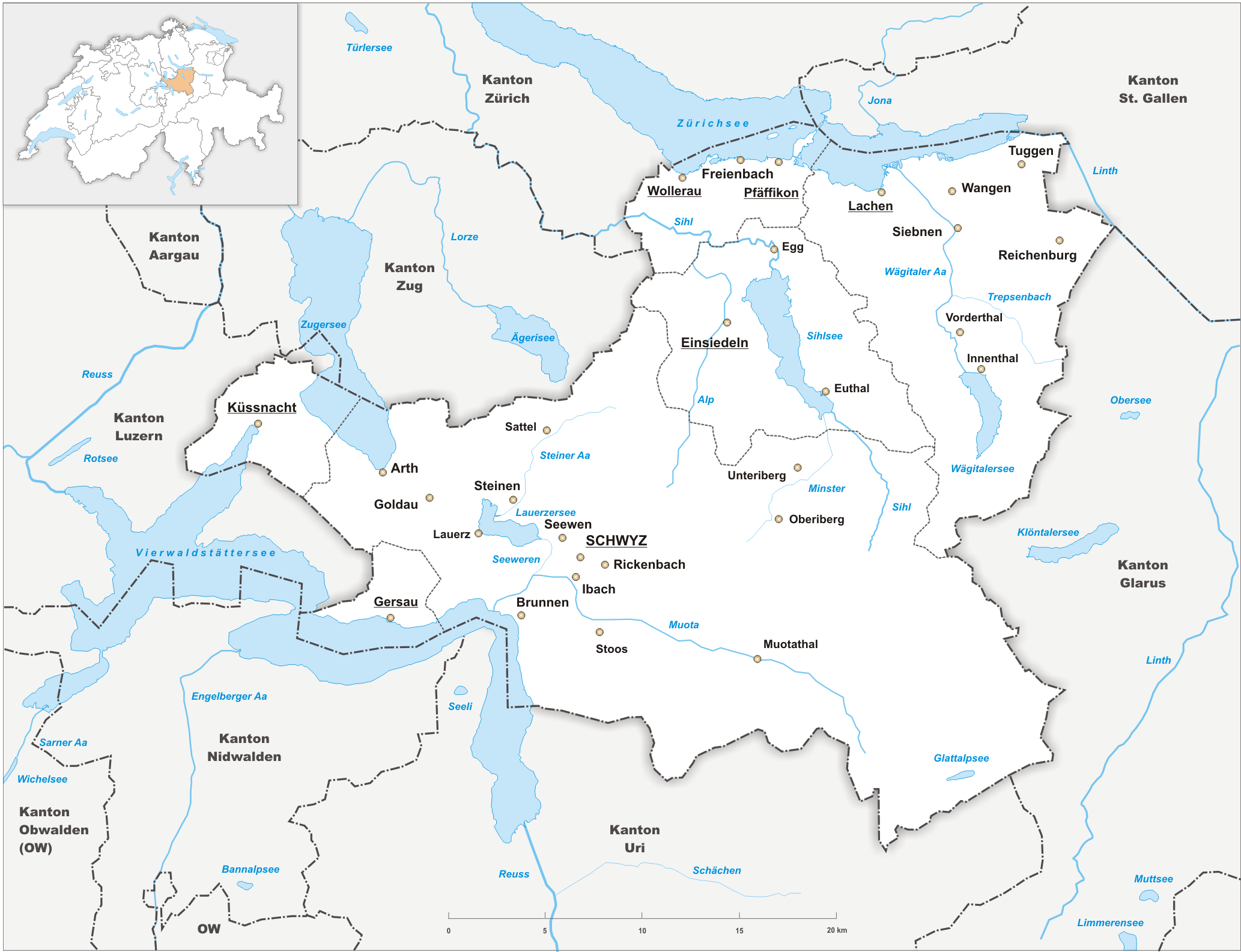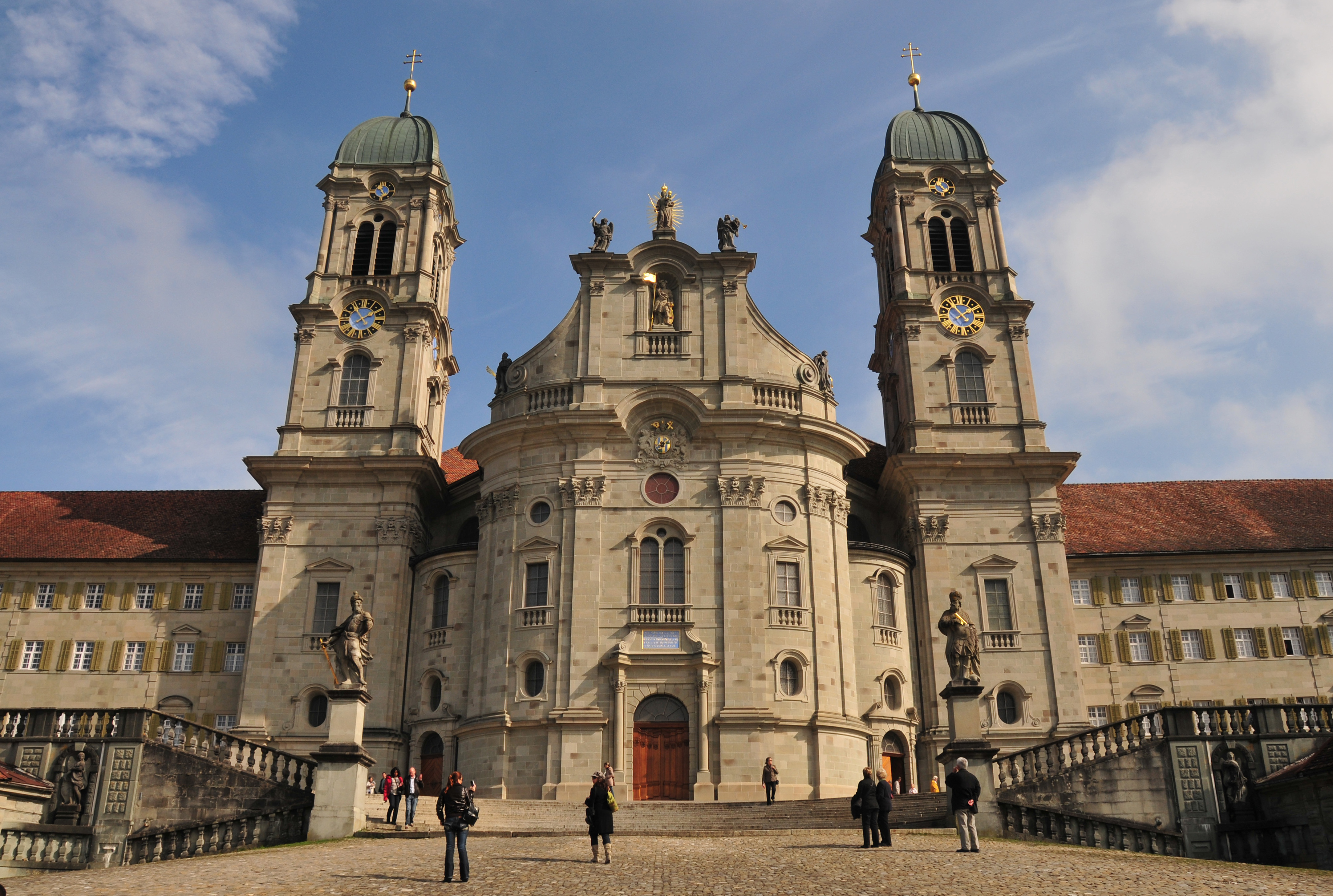|
Rickenbach, Schwyz
Rickenbach is a village in the Schwyz, municipality of Schwyz, itself in the canton of Schwyz in Switzerland. It lies some to the east of the town centre of Schwyz. The Rotenfluebahn links Rickenbach with the summit of the Rotenfluh mountain, which is, in summer, a popular vantage point over the Lake Lucerne region, and, in winter, a ski area. References External links * Geography of the canton of Schwyz Villages in Switzerland Schwyz {{Schwyz-geo-stub ... [...More Info...] [...Related Items...] OR: [Wikipedia] [Google] [Baidu] |
Switzerland
Switzerland, officially the Swiss Confederation, is a landlocked country located in west-central Europe. It is bordered by Italy to the south, France to the west, Germany to the north, and Austria and Liechtenstein to the east. Switzerland is geographically divided among the Swiss Plateau, the Swiss Alps, Alps and the Jura Mountains, Jura; the Alps occupy the greater part of the territory, whereas most of the country's Demographics of Switzerland, 9 million people are concentrated on the plateau, which hosts List of cities in Switzerland, its largest cities and economic centres, including Zurich, Geneva, and Lausanne. Switzerland is a federal republic composed of Cantons of Switzerland, 26 cantons, with federal authorities based in Bern. It has four main linguistic and cultural regions: German, French, Italian and Romansh language, Romansh. Although most Swiss are German-speaking, national identity is fairly cohesive, being rooted in a common historical background, shared ... [...More Info...] [...Related Items...] OR: [Wikipedia] [Google] [Baidu] |
Canton Of Schwyz
The canton of Schwyz ( ; ; ; ) is a Cantons of Switzerland, canton in central Switzerland between the Swiss Alps, Alps in the south, Lake Lucerne to the west and Lake Zürich in the north, centred on and named after the town of Schwyz. It is one of the founding cantons of Switzerland; Switzerland's name is derived from the name of the canton, and the flag of Switzerland from its coat of arms. For the history of the name, see Schwyz. The Swiss Federal Charter is on display in Schwyz. Northeast of the town of Schwyz is Einsiedeln Abbey. History Prehistory to the Roman era The earliest traces of humans in Schwyz are from the Upper Paleolithic and Early Mesolithic, or about 12,500 BC. An excavation of the karst caves in the valley of the Muota river (''Muotatal'') revealed numerous sites, some dating to the Younger Dryas period (). The alpine meadows at Bödmeren, Twärenen and Silberen were Stone Age hunter-gatherer camps. Ibex and red deer bones, along with charcoal, indicate tha ... [...More Info...] [...Related Items...] OR: [Wikipedia] [Google] [Baidu] |
Schwyz
Schwyz (; ; ) is a town and the capital of the canton of Schwyz in Switzerland. The Federal Charter of 1291 or ''Bundesbrief'', the charter that eventually led to the foundation of Switzerland, can be seen at the ''Bundesbriefmuseum''. The official language of Schwyz is (the Swiss variety of) Swiss Standard German, German, but the main spoken language is the local variant of the Alemannic German, Alemannic Swiss German (linguistics), Swiss German dialect. Name The earliest certain record of the name dates to 972, recorded in Medieval Latin as '. There are a number of uncertain records dated between 924 and 960, in the form ''Swites'' (''Suuites'') and ''Switz''. The name is recorded as ''Schwitz'' in the 13th century, and in the 17th to 18th century often as ''Schweitz''. The name's etymology is uncertain. It was long presented as derived from the name of an eponymous founder in Swiss legend, one Swiss Swedish origin legend, ''Suito'' or ''Switer'', an explanation found i ... [...More Info...] [...Related Items...] OR: [Wikipedia] [Google] [Baidu] |
Canton Of Schwyz
The canton of Schwyz ( ; ; ; ) is a Cantons of Switzerland, canton in central Switzerland between the Swiss Alps, Alps in the south, Lake Lucerne to the west and Lake Zürich in the north, centred on and named after the town of Schwyz. It is one of the founding cantons of Switzerland; Switzerland's name is derived from the name of the canton, and the flag of Switzerland from its coat of arms. For the history of the name, see Schwyz. The Swiss Federal Charter is on display in Schwyz. Northeast of the town of Schwyz is Einsiedeln Abbey. History Prehistory to the Roman era The earliest traces of humans in Schwyz are from the Upper Paleolithic and Early Mesolithic, or about 12,500 BC. An excavation of the karst caves in the valley of the Muota river (''Muotatal'') revealed numerous sites, some dating to the Younger Dryas period (). The alpine meadows at Bödmeren, Twärenen and Silberen were Stone Age hunter-gatherer camps. Ibex and red deer bones, along with charcoal, indicate tha ... [...More Info...] [...Related Items...] OR: [Wikipedia] [Google] [Baidu] |
Rotenfluebahn
The Rotenfluebahn is a gondola lift in the canton of Schwyz. It links Rickenbach with the Rotenfluh. It's owned and operated by the Rotenfluebahn Mythenregion AG (formerly Seilbahn Rickenbach-Rotenfluh AG until September 2013). The current lift was built in 2014 and has been operating since December 2014. In December 2024 the lift was featured in the crime film series . History The first aerial tramway was built in 1957 and connected Huserenberg with Rothenfluh. An additional one from Rickenbach to Huserenberg was then built in 1964. It operated until 2 November 2004, when it was closed due to security concerns. It was then demolished in 2009. In 2005, Nathalie Henseler became the CEO of Seilbahn Rickenbach-Rotenfluh AG, and at the general assembly, it was decided to begin planning a new lift. The planning took several years, partly due to objections to the planning application that went all the way to the Federal Supreme Court. Notable investors of the new lift include: The ... [...More Info...] [...Related Items...] OR: [Wikipedia] [Google] [Baidu] |
Rotenfluh Mountain
The Rotenfluh (also spelled ''Rotenflue'') is a mountain in the Swiss Prealps, located east of Schwyz in Central Switzerland. It is part of the range surrounding the valley of Alpthal, culminating at the Gross Mythen. The Rotenfluh is a popular vantage point over the Lake Lucerne region. The mountain is part of a ski area and is easily accessible from Rickenbach near Schwyz by the Rotenfluebahn. Unlike the previous cable car, which culminated at an elevation of 1,527 metres, the current facility reaches a higher elevation, the upper station being within a few metres from the top. Several restaurants lie in the summit area. See also *List of mountains of Switzerland accessible by public transport *Nathalie Henseler Nathalie Henseler (born 9 December 1975, Altdorf, Switzerland) is a Swiss entrepreneur, author and politician ( FDP). Life and career Nathalie Henseler grew up in Goldau. After finishing high school at Theresianum Ingenbohl, she studied Germ ... References ... [...More Info...] [...Related Items...] OR: [Wikipedia] [Google] [Baidu] |
Lake Lucerne
Lake Lucerne (, literally 'Lake of the four Waldstätte, forested settlements' (in English usually translated as ''forest cantons''), , ) is a lake in central Switzerland and the fourth largest in the country. Geography The lake has a complicated shape, with several sharp bends and four arms. It starts in the south–north bound Reuss (river), Reuss Valley between steep cliffs above the ''Urnersee'' from Flüelen towards Brunnen to the north before it makes a sharp bend to the west where it continues into the ''Gersauer Becken''. Here is also the deepest point of the lake with . Even further west of it is the ''Buochser Bucht'', but the lake sharply turns north again through the narrow opening between the ''Unter Nas'' (lower nose) of the Bürgenstock to the west and the ''Ober Nas'' (upper nose) of the Rigi to the east to reach the ''Vitznauer Bucht''. In front of Vitznau below the Rigi the lake turns sharply west again to reach the center of a four-arm cross, called the ''Ch ... [...More Info...] [...Related Items...] OR: [Wikipedia] [Google] [Baidu] |
Neue Luzerner Zeitung
''Luzerner Zeitung'' (''LZ'') is a Swiss German-language daily newspaper, published in Lucerne. History and profile ''Luzerner Zeitung'' was created in 1996 through the merger of ''Luzerner Zeitung'' (''LZ'') and '' Luzerner Neuste Nachrichten'' (''LNN''). ''Luzerner Zeitung'' (1991–1996) had replaced the two daily newspapers '' Luzerner Tagblatt'' and '' Vaterland''. The paper is owned by CH Media which also owns ''Neue Zürcher Zeitung'' and '' St. Galler Tagblatt''. Its editor-in-chief is Thomas Bornhauser. The newspaper is published in six regional editions: In 1997 ''Neue Luzerner Zeitung'' had a circulation of 131,761 copies. Its circulation was 133,000 copies in 2003. According to WEMF AG, , the newspaper had a certified distribution of 134,526 copies and a readership of 290,000. The 2006 circulation of the paper was 131,004 copies. It was 127,244 copies in 2009. See also * List of newspapers in Switzerland The number of newspapers in Switzerland was 406 before W ... [...More Info...] [...Related Items...] OR: [Wikipedia] [Google] [Baidu] |
Geography Of The Canton Of Schwyz
Geography (from Ancient Greek ; combining 'Earth' and 'write', literally 'Earth writing') is the study of the lands, features, inhabitants, and phenomena of Earth. Geography is an all-encompassing discipline that seeks an understanding of Earth and its human and natural complexities—not merely where objects are, but also how they have changed and come to be. While geography is specific to Earth, many concepts can be applied more broadly to other celestial bodies in the field of planetary science. Geography has been called "a bridge between natural science and social science disciplines." Origins of many of the concepts in geography can be traced to Greek Eratosthenes of Cyrene, who may have coined the term "geographia" (). The first recorded use of the word γεωγραφία was as the title of a book by Greek scholar Claudius Ptolemy (100 – 170 AD). This work created the so-called "Ptolemaic tradition" of geography, which included "Ptolemaic cartographic theory." ... [...More Info...] [...Related Items...] OR: [Wikipedia] [Google] [Baidu] |
Villages In Switzerland
A village is a human settlement or Residential community, community, larger than a hamlet (place), hamlet but smaller than a town with a population typically ranging from a few hundred to a few thousand. Although villages are often located in rural areas, the term urban village is also applied to certain urban neighborhoods. Villages are normally permanent, with fixed dwellings; however, transient villages can occur. Further, the dwellings of a village are fairly close to one another, not scattered broadly over the landscape, as a dispersed settlement. In the past, villages were a usual form of community for societies that practice subsistence agriculture and also for some non-agricultural societies. In Great Britain, a hamlet earned the right to be called a village when it built a Church (building), church. [...More Info...] [...Related Items...] OR: [Wikipedia] [Google] [Baidu] |




